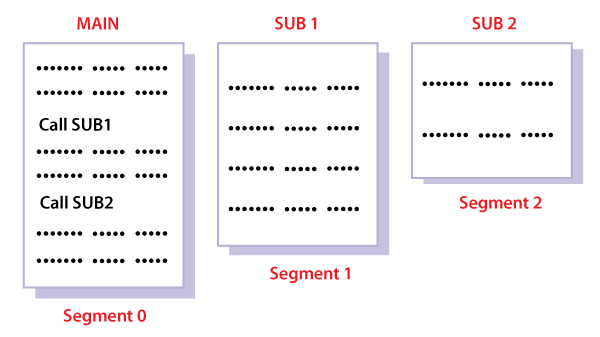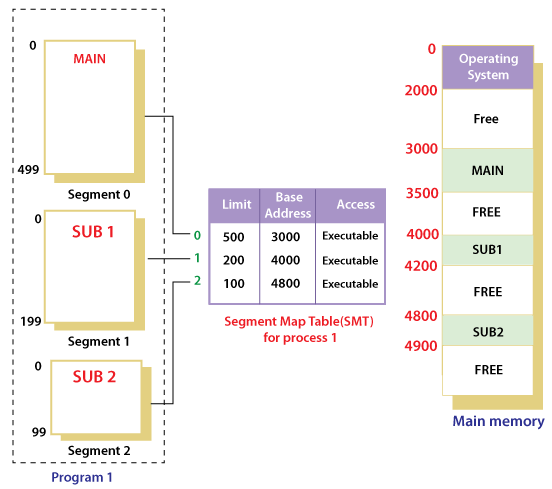Segmentation in OS (Operating System)In Operating Systems, Segmentation is a memory management technique in which the memory is divided into the variable size parts. Each part is known as a segment which can be allocated to a process. The details about each segment are stored in a table called a segment table. Segment table is stored in one (or many) of the segments. Segment table contains mainly two information about segment:
Why Segmentation is required?Till now, we were using Paging as our main memory management technique. Paging is more close to the Operating system rather than the User. It divides all the processes into the form of pages regardless of the fact that a process can have some relative parts of functions which need to be loaded in the same page. Operating system doesn't care about the User's view of the process. It may divide the same function into different pages and those pages may or may not be loaded at the same time into the memory. It decreases the efficiency of the system. It is better to have segmentation which divides the process into the segments. Each segment contains the same type of functions such as the main function can be included in one segment and the library functions can be included in the other segment. 
Translation of Logical address into physical address by segment tableCPU generates a logical address which contains two parts:
For Example: Suppose a 16 bit address is used with 4 bits for the segment number and 12 bits for the segment offset so the maximum segment size is 4096 and the maximum number of segments that can be refereed is 16. When a program is loaded into memory, the segmentation system tries to locate space that is large enough to hold the first segment of the process, space information is obtained from the free list maintained by memory manager. Then it tries to locate space for other segments. Once adequate space is located for all the segments, it loads them into their respective areas. The operating system also generates a segment map table for each program. 
With the help of segment map tables and hardware assistance, the operating system can easily translate a logical address into physical address on execution of a program. The Segment number is mapped to the segment table. The limit of the respective segment is compared with the offset. If the offset is less than the limit then the address is valid otherwise it throws an error as the address is invalid. In the case of valid addresses, the base address of the segment is added to the offset to get the physical address of the actual word in the main memory. The above figure shows how address translation is done in case of segmentation. Advantages of Segmentation
Disadvantages
Next TopicPaging VS Segmentation
|
 For Videos Join Our Youtube Channel: Join Now
For Videos Join Our Youtube Channel: Join Now
Feedback
- Send your Feedback to [email protected]
Help Others, Please Share









